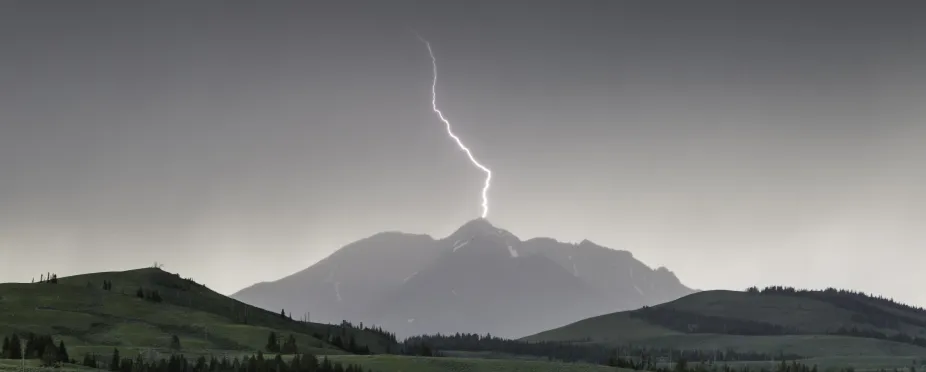Lightning and Thunder
Lightning is a bright flash of light during a thunderstorm. Some bolts of lightning travel from cloud to cloud. Some bolts of lightning travel from a cloud down to the ground. Lightning usually strikes high points in the landscape - like mountaintops or tall trees. A bolt of lightning is so hot that it causes the air along its path to expand, which creates the rumble of thunder.

Lightning usually strikes high points in the landscape - like this mountaintop.
NPS/Yellowstone National Park/Neal Herbert
Why Does Lightning Happen?
Have you ever shuffled your feet across a carpet wearing socks and then felt a little zap when you touched something?
When you shuttle across the carpet, you are making a little static electricity. Electricity forms when charged particles collect together and flow towards particles with the opposite charge.
Tiny particles with a negative charge rub off the carpet and onto your feet. When you touch something, they race toward particles with a positive charge while the positively charged particles race towards the negative charge. That’s what makes the zap. Static electricity is like a tiny bolt of lightning.
The same thing happens in a thunderstorm. The graphics below describe how lightning forms.

UCAR/L.S. Gardiner